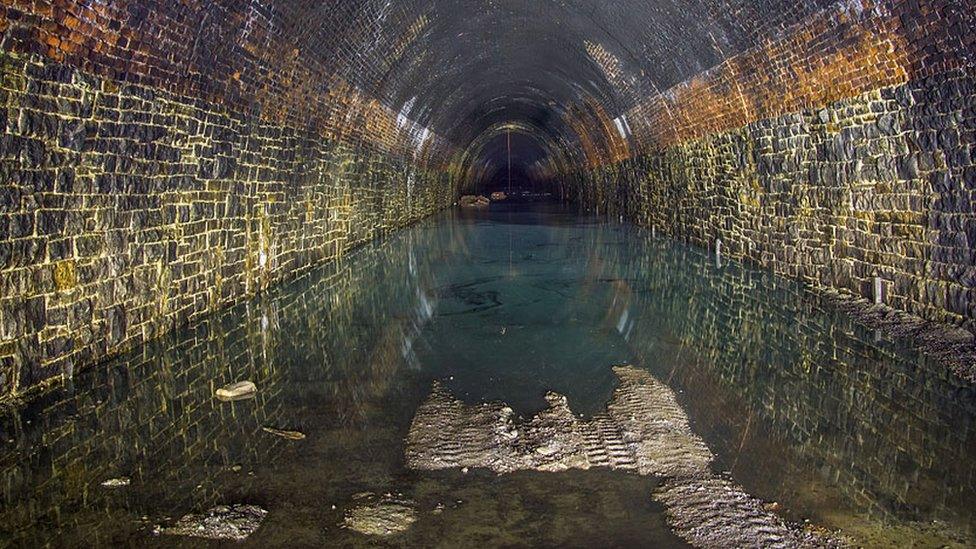Queensbury Tunnel: £7.2m work to stop tunnel collapsing complete
- Published
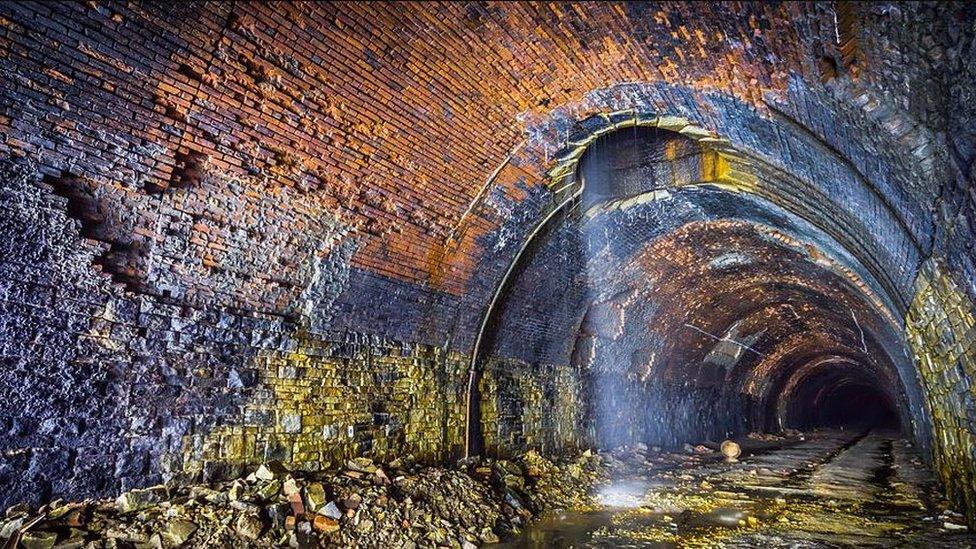
The 1.4-mile (2.3km) Queensbury Tunnel was closed to trains in 1956
Work to stop a disused railway tunnel collapsing has finished at a cost of £7.2m, officials have said.
The 1.4-mile (2.25km) Queensbury Tunnel connects Holmfield, Halifax and Queensbury, on the edge of Bradford, beneath the Pennines in West Yorkshire.
National Highways said its lining had been strengthened to prevent any more "uncontrolled collapses".
Campaigners want the tunnel to become a traffic-free "greenway" and said the work was a "monumental waste of time".
The Queensbury Tunnel Society (QTS) said the £7m spent on securing the tunnel could have been put towards making it into a cycle route to be used for generations.
Graeme Bickerdike from the society said: "The past three years have been a monumental waste of time for the taxpayer.
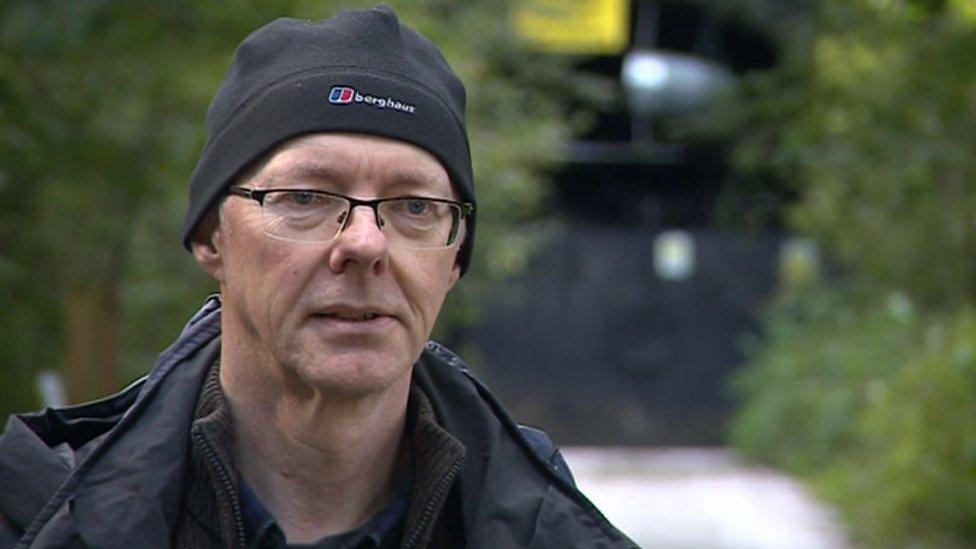
Graeme Bickerdike said an investment has to be made in sustainable transport
"They came here with the intention of spending £550,000 over three or four months.
"They are leaving having spent more than £7m over three years, and the condition of the tunnel hasn't improved.
"They say it has been stabilised, which it probably has, but whether that was necessary is a matter of considerable argument."
He said there was a "lack of vision" within National Highways which was failing to prioritise sustainable transport.
"If we are serious about tackling the challenges of climate change and improving sustainable transport, a sensible investment has to be made, bringing this tunnel back into use and creating that active travel route."
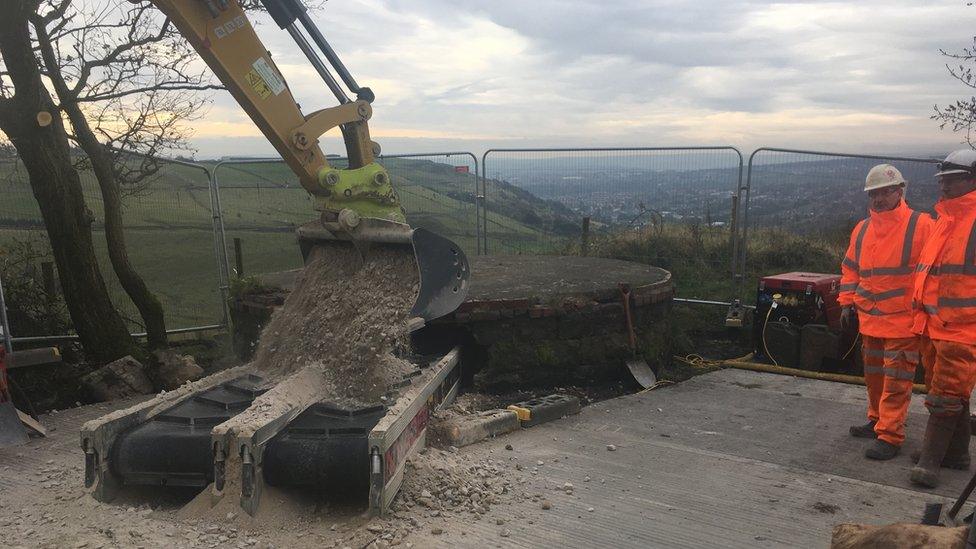
Highways England said engineers had determined the affected area needed immediate attention
A Department for Transport spokesperson said it had considered bringing the tunnel into public use and would publish its findings "in due course".
It has paid for the walking and cycling charity Sustrans to carry out a study into potential cycling routes between Bradford, Keighley and Halifax - considering routes which incorporate Queensbury Tunnel and routes which do not.
National Highways Historical Railways Estate Director Richard Marshall said: "We have now concluded our work to keep Queensbury Tunnel safe.
"Our work included strengthening the tunnel lining and providing a safe passage through areas where the roof has collapsed, securing the tunnel entrance and dealing with the effects of the diversion of Strines Beck into the tunnel."
He said engineers had worked in flooded areas of the tunnel, gaining access by boat and raised platforms.
"Our work strengthened the tunnel to prevent further uncontrolled collapses, ensuring that any future plans for the re-use of the structure can be realised," Mr Marshall added.

Follow BBC Yorkshire on Facebook, external, Twitter, external and Instagram, external. Send your story ideas to yorkslincs.news@bbc.co.uk, external.
Related topics
- Published17 March 2021
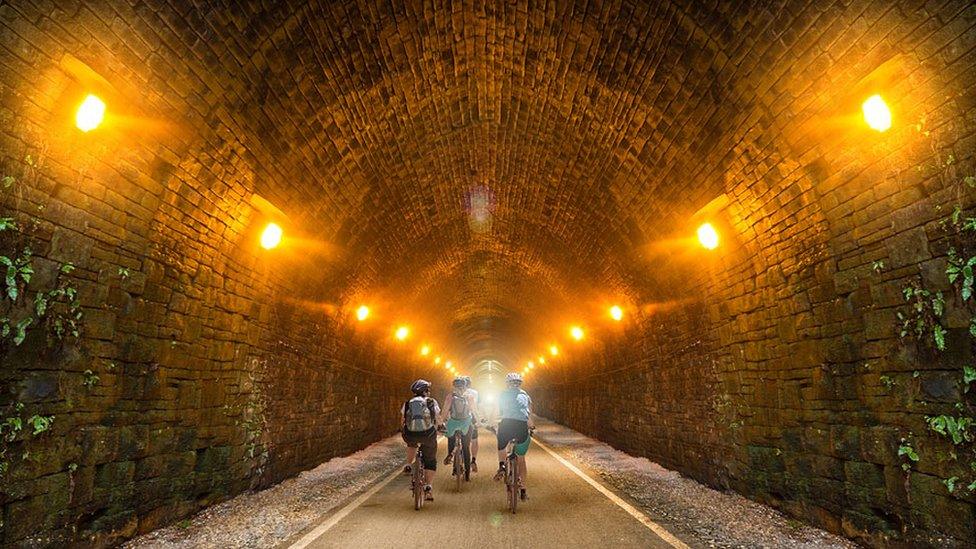
- Published15 July 2020

- Published22 June 2020

- Published29 October 2019

- Published22 October 2019

- Published26 August 2019

- Published6 June 2019
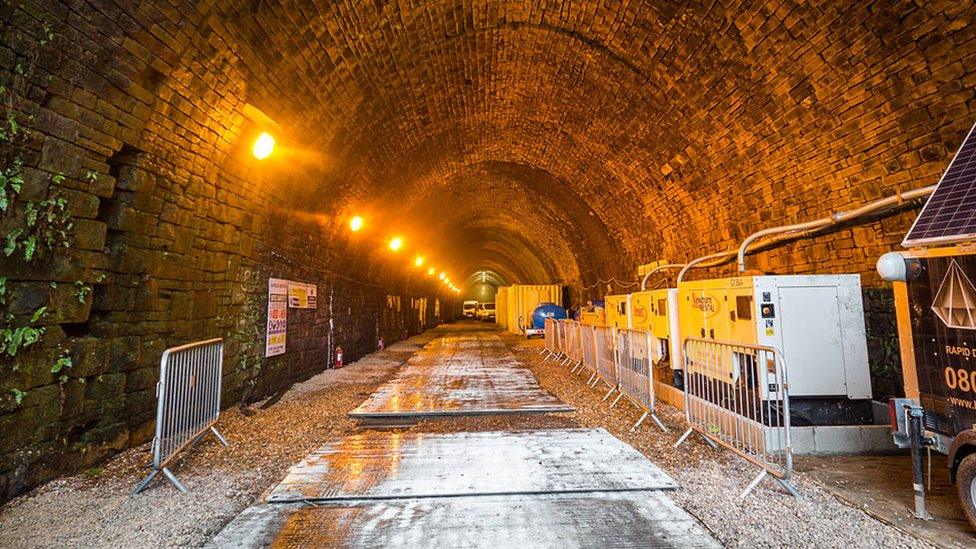
- Published20 July 2018
